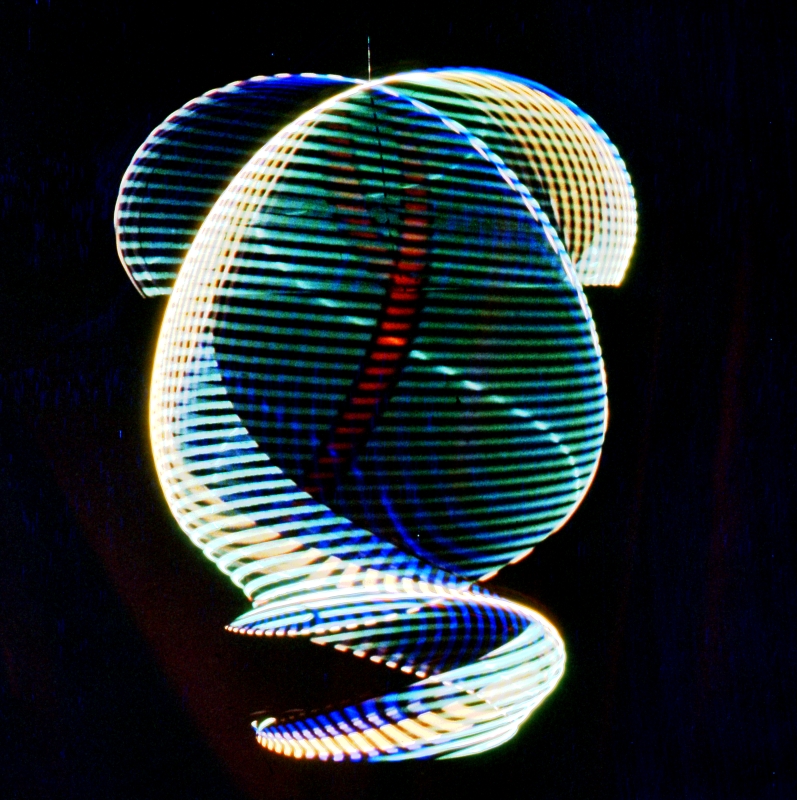

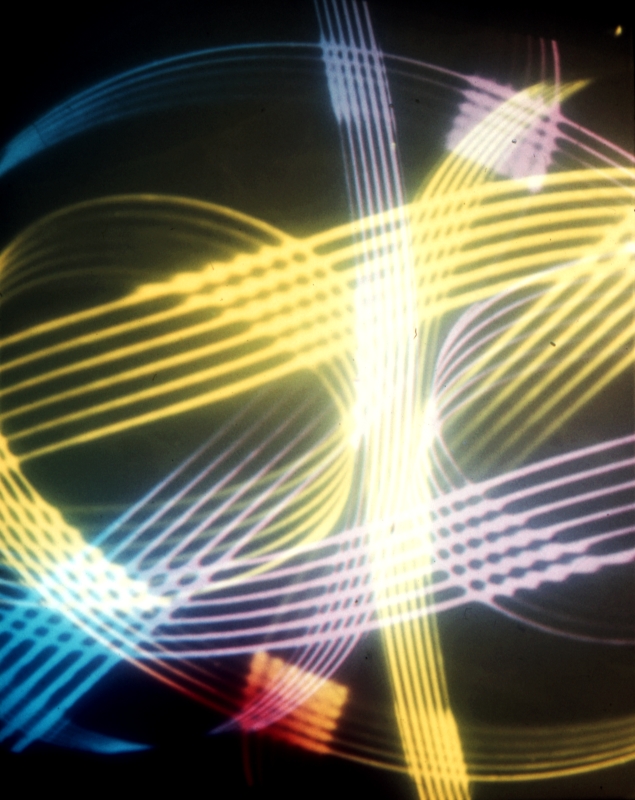

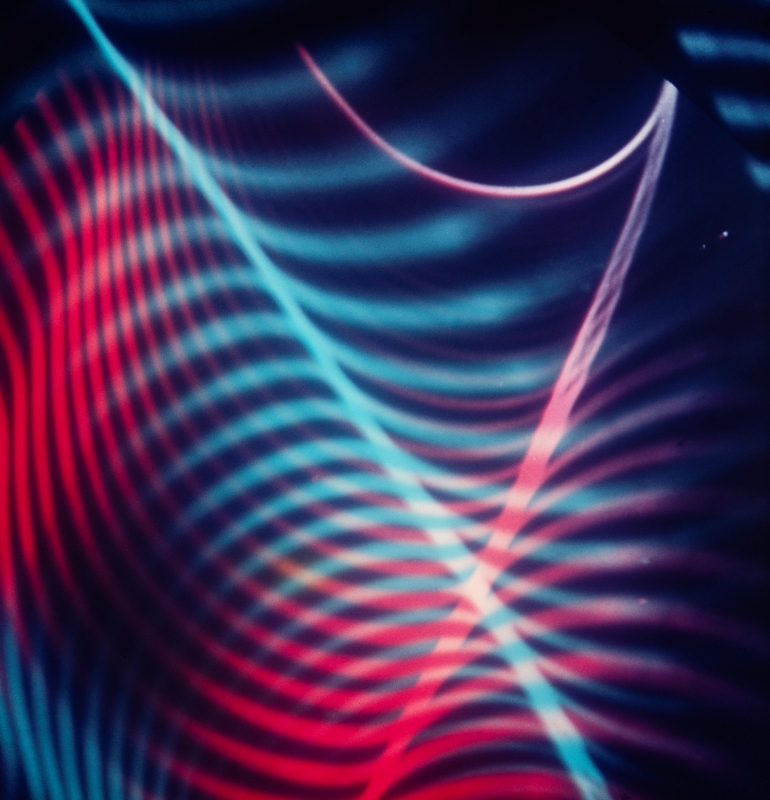

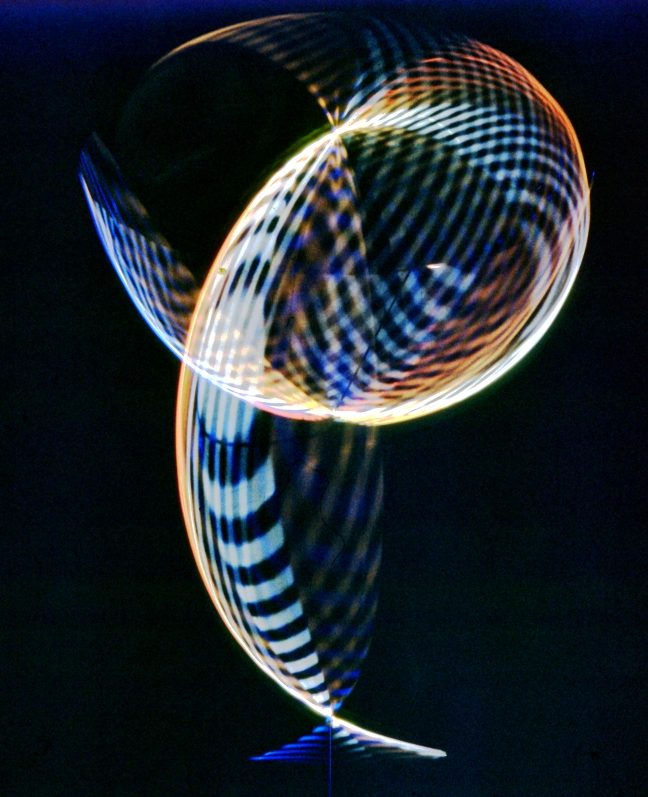

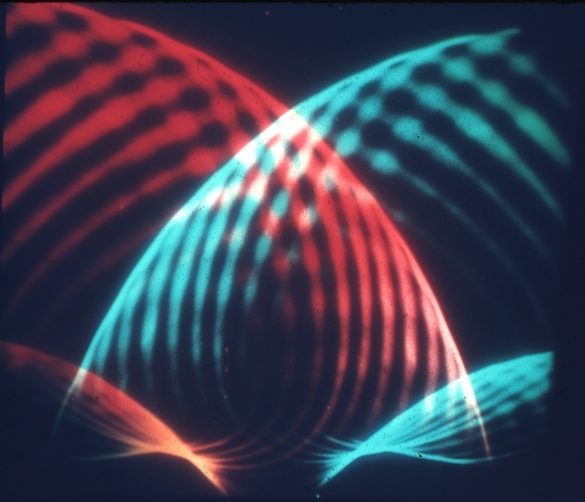

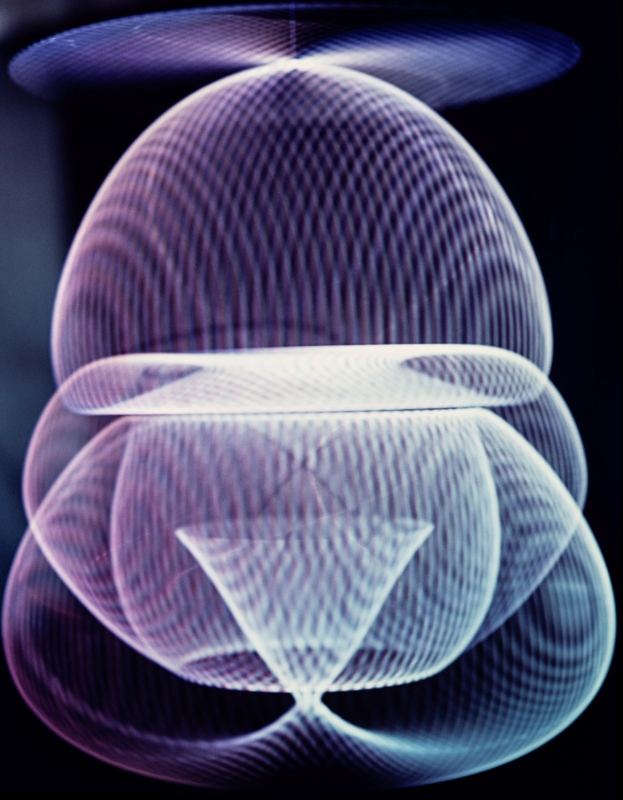

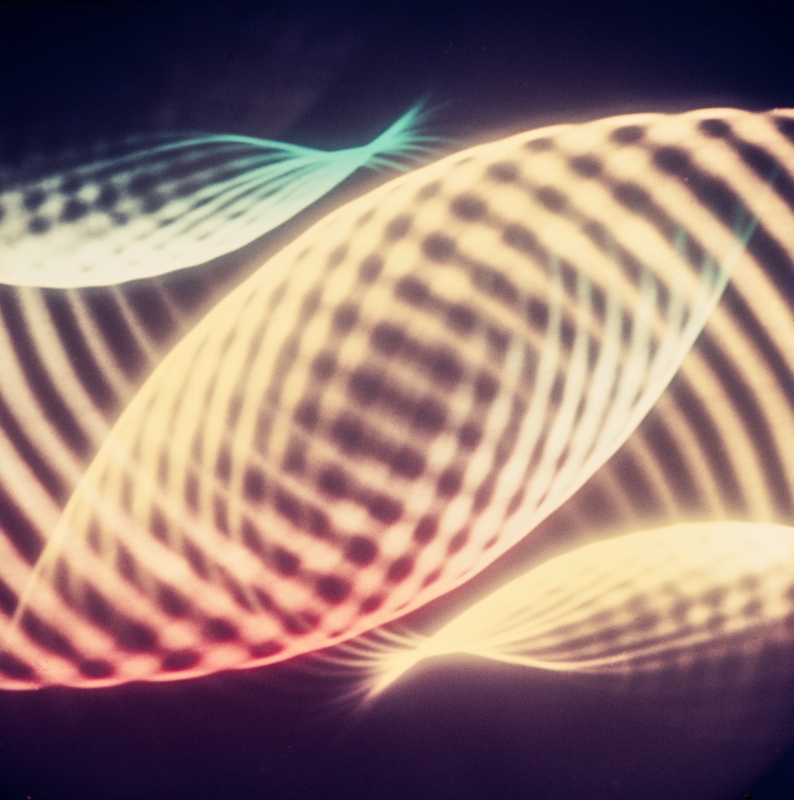

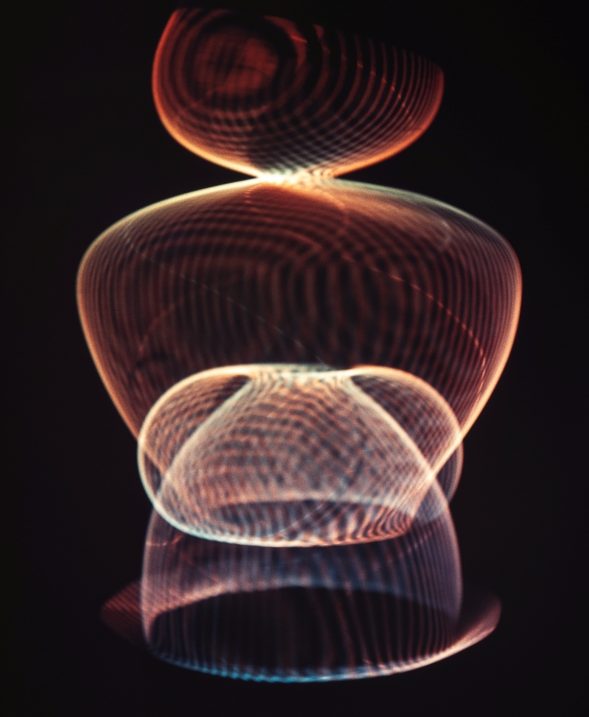

Serie Color (1957/58 and 1961/62)


As early as the mid-1950s, Herbert W. Franke was already thinking about how he could use color films for his artistic experiments, which until then had only been monochrome. They became increasingly popular, not only among professional photographers, but also on the mass market. He developed his extensive Color series over several years. For the first series, he used old monochrome motifs of his series Lichtformen and Raumstudien, but also oscillograms and band forms for subsequent coloring. For this coloring, the b/w image was projected onto a screen, with a transparent color foil in front of the projector’s optic lens. He also used two machines with different color foils that projected the same motif mirrored or shifted to the screen. Very few of these images were developed as vintage prints at the time. This was also due to the fact that a high-quality enlargement of color images was significantly more expensive than black and white photographs. Some motifs were printed, for example Franke used one of these motifs as the cover of his book “Kunst und Konstruktion” (Art and Construction), published in 1957.
In 1961/62, he then produced a completely new series of Raumstudien (space studies): In his own study room, he hung a bent wire painted white from the ceiling – as he had done years earlier in the professional photo lab at Siemens. It was then illuminated by one or two slide projectors, again with a color foil. The wire, set in motion by rotation or translation, was photographed with a long exposure time. This second Color Series has never been shown publicly, but lay dormant in the photo archive for decades. It was only shortly before Franke’s death that he and Susanne Päch “rediscovered” the pictures while systematically combing through the photo archive. Franke was delighted and said that he thought these pictures were much more successful now than back then. In 2024, one of these motifs became the key visual for Franke’s first solo show Illuminating the Invisible in the König Galerie Two motifs were produced in a small edition.




